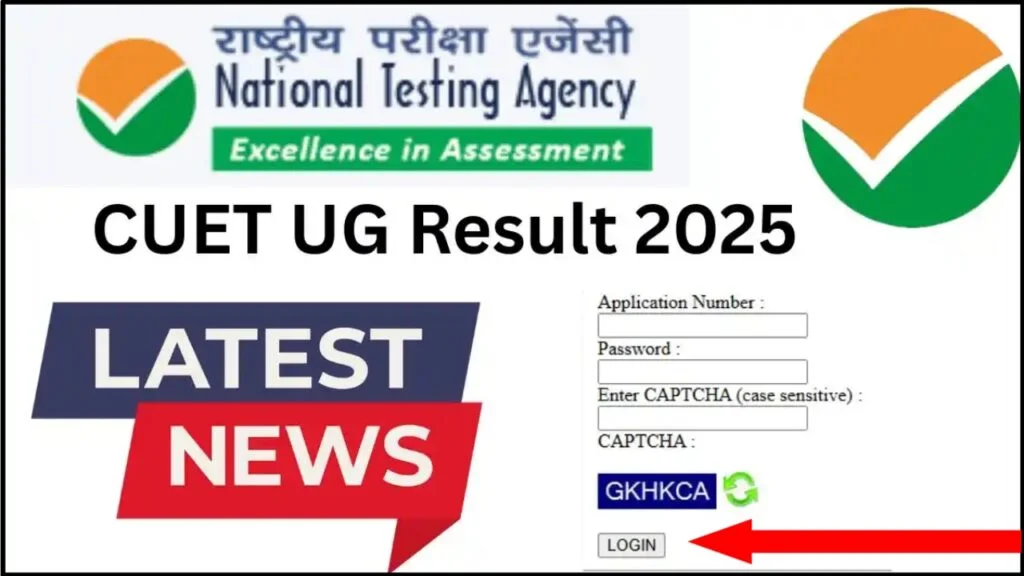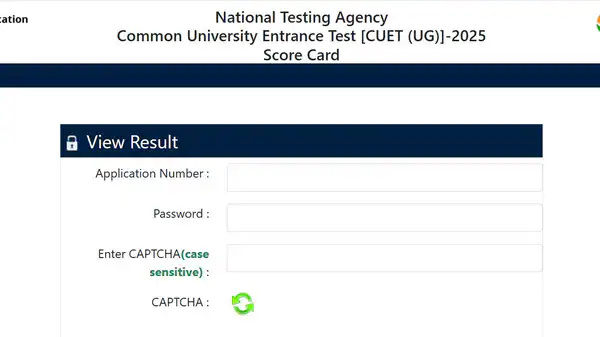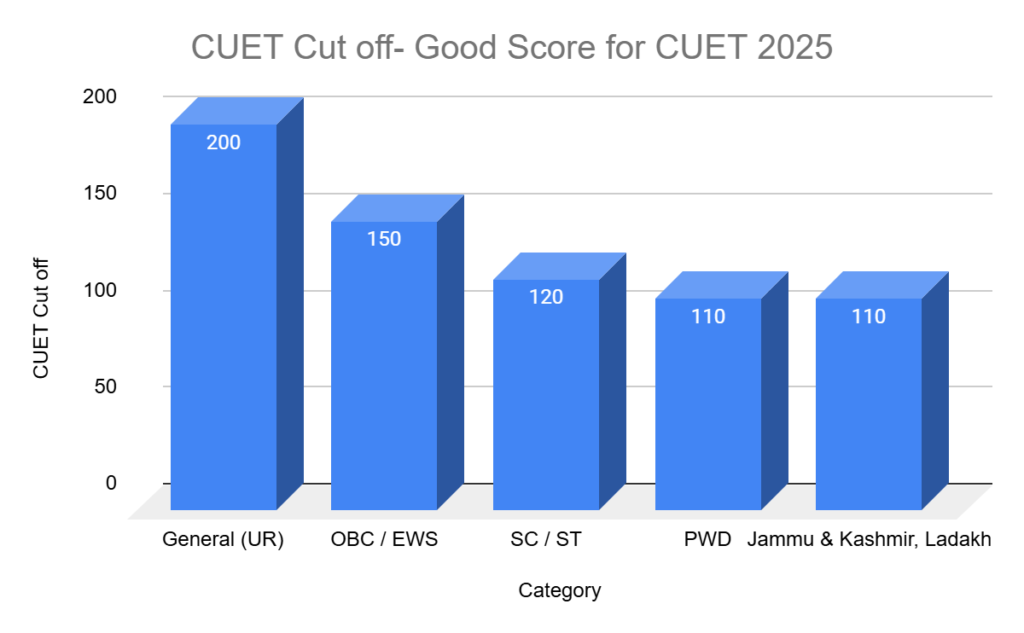
CUET Exam 2025
The Common University Entrance Test (CUET) serves as a crucial stepping stone for students aspiring to gain admission into various undergraduate programs within Indian universities. First introduced to streamline the admission process, CUET aims to assess the academic aptitude of students across a diverse range of subjects. With an increasing number of institutions participating in the examination, its significance in the higher education landscape has grown immensely. The CUET provides a unified platform, facilitating fair evaluation and equal opportunities for all candidates, thereby alleviating the discrepancies that could arise from varied school grading systems.
As of 2025, several noteworthy changes have been implemented in the examination’s structure and format. In an effort to enhance the accessibility and reliability of the test, the CUET has introduced a more inclusive syllabus spanning various subjects, enabling students from different academic backgrounds to participate. This revised framework not only aims to assess knowledge but also critical thinking and problem-solving abilities. Furthermore, recent developments emphasize the importance of a comprehensive evaluation, ensuring that students are not merely tested on rote memorization but are also encouraged to engage with the material in a meaningful way.
The examination format consists of multiple-choice questions (MCQs), covering subjects ranging from language proficiency to quantitative aptitude. Candidates can select subjects based on their intended field of study, aligning the test with their academic aspirations. This flexibility affords students the opportunity to showcase their strengths in areas relevant to their future endeavors. As the CUET continues to evolve, it remains an indispensable tool for shaping the academic journeys of countless students across the nation, marking a significant paradigm shift in educational admissions.
Understanding the CUET 2025 Results

The CUET 2025 results play a crucial role in determining students’ admission prospects into various colleges and academic programs. The Central Universities Entrance Test (CUET) is a significant gateway for students seeking admission into prestigious universities across the country. The results will not only reflect a student’s performance but also their eligibility for desired courses and colleges, making it essential for applicants to understand the impact of these scores.
The grading system utilized for the CUET 2025 results typically incorporates various components such as percentile scores, subject-specific marks, and overall performance rank. It is important for students to familiarize themselves with how these components are calculated, as they directly influence admission decisions. Generally, the percentile score reflects the percentage of candidates who scored lower than a particular individual in the examination, allowing students to gauge their performance relative to peers. A higher percentile indicates better performance and consequently enhances the chances of securing a seat in competitive programs.
In addition to understanding percentile scores, students should also take note of key metrics when evaluating their results. These metrics often include the overall score, individual subject scores, and cut-off percentages set by the universities for various courses. These cut-off marks can vary depending on factors such as the popularity of the course, the number of applicants, and the overall difficulty of the exam. Students must emphasize these aspects while interpreting their CUET scores to make informed decisions about their college applications.
Overall, comprehending the CUET 2025 results is vital for students as these scores will have a direct impact on their educational future. Awareness of the grading system and key performance metrics can empower students to navigate the admissions landscape more effectively.
How to Access Your CUET Results

Accessing your CUET 2025 results online is a straightforward process, which requires a few essential details and navigating through the designated official website. To begin, ensure you have your registration number readily available, as it is a mandatory requirement for logging in. Follow these step-by-step instructions to access your results efficiently:
1. **Visit the Official Website**: First, you need to navigate to the official website designated for CUET results. Typically, this will be https://cuet.samarth.ac.in. You may also find links for results on the respective institution’s homepage, but it is best to access it directly from the official portal to avoid misinformation.
2. **Find the Results Link**: Once on the homepage, look for the ‘Results’ section or a banner that specifically indicates ‘CUET 2025 Results’. Click on this link for further instructions.
3. **Enter Required Credentials**: Here, you will be prompted to enter essential information, primarily your registration number and, in some cases, your date of birth. Ensure that you input this information accurately to prevent any delays in accessing your results.
4. **Submit and View Results**: After entering your required details, click the submit button. Your CUET result for 2025 should appear on your screen. It is advisable to download and save a copy of your result for future reference.
5. **Troubleshooting**: If you encounter issues while accessing your results, such as the page not loading or an error message, consider the following tips: ensure you have a stable internet connection, try clearing your browser’s cache, or switch to a different browser. If the problem persists, return after some time, as the server may be experiencing high traffic due to a large number of students accessing their results simultaneously.
By following these steps, you can seamlessly access your CUET 2025 results and stay informed about your academic progress.
Interpreting Your CUET Score

Understanding the CUET (Common University Entrance Test) score is a fundamental step for students aiming for admission into various universities. The scoring system of the CUET is designed to provide a comprehensive overview of a student’s performance, which can help in evaluating future academic paths. Each section of the CUET is evaluated individually, with scores ranging from 0 to 300 for each subject, depending on the weightage assigned to it.
Students can interpret their scores by recognizing the specific score ranges and corresponding performance levels. Generally, a score above 180 indicates a strong grasp of the material, suggesting a competitive advantage in securing admission in preferred institutions. A score in the range of 120 to 180 is indicative of average performance, whereas scores beneath 120 may suggest areas requiring improvement. Therefore, it is essential for students to assess their performance objectively within these indicated boundaries.
Furthermore, understanding percentile ranks is crucial for evaluating how well a student has performed relative to their peers. The CUET results typically show percentile scores alongside raw scores, and this indicates the percentage of candidates who scored lower than the examinee. For instance, if a student’s percentile rank is 90, this means they performed better than 90% of other test-takers. Such metrics can significantly aid students in making informed decisions regarding university applications and preparation strategies.
In conclusion, interpreting your CUET score is not solely about the raw numbers, but encompasses understanding the scoring system and the comparative performance it reflects. Students should take the time to analyze their scores and percentile ranks to make informed academic choices moving forward.
What to Do After Receiving Your Results

Receiving the CUET results can evoke a spectrum of emotions, regardless of the outcome. It is crucial for candidates to understand the subsequent steps required, which not only help in mental preparation but also ensure a smooth transition into the next phase of their academic journey.
For successful candidates, the next step is to prepare for the counseling process. This involves familiarizing oneself with the counseling schedule and procedures outlined by the relevant institutions. Typically, candidates will need to submit certain documents, including their CUET scorecard, identity proof, and academic records. Being organized and ensuring that these documents are readily available can significantly ease the enrollment process.
Additionally, candidates should research their preferred courses and institutions. Understanding admission criteria, placement records, and course structures can aid in making informed decisions. It is also advisable to attend any pre-counseling webinars or information sessions conducted by the institutions. This can provide invaluable insights and answer any lingering questions regarding the process.
Conversely, for those who did not achieve their desired results, it is essential to approach the situation with resilience. Reflecting on the performance and identifying areas for improvement can be instrumental for future attempts. Candidates might also want to explore alternative pathways, such as applying to different colleges or considering other courses that align with their interests and career goals. Engaging in scholarship and vocational training opportunities could also present a viable route for skill enhancement.
Regardless of the outcome, candidates should focus on their next steps—whether it is pursuing further studies or re-evaluating their options. This proactive approach can alleviate potential stress and set the stage for future success in their educational endeavors.
Frequently Asked Questions About CUET Results

The Central Universities Entrance Test (CUET) is a significant milestone for students seeking admission to various central universities across India. As candidates await their results, several questions often arise regarding the CUET results, retake policies, re-evaluation procedures, and the consequent admission timelines. Addressing these concerns can substantially alleviate the stress associated with post-exam anxieties.
One of the most frequently asked questions is regarding the retake policy for the CUET. In general, if students are dissatisfied with their results, they have the option to retake the examination in the following academic cycle. However, it is crucial to note that the specific policies may vary between universities, thus it is advisable to check individual institutions for detailed guidelines.
An additional area of concern is the re-evaluation process. Candidates wishing to contest their CUET results may request a re-evaluation. This procedure typically requires students to fill out a re-evaluation form and pay any applicable fees. The timeline for re-evaluation results usually varies but can take several weeks. Students should keep updated with the official notifications from the relevant authorities to ensure they adhere to all deadlines.
Another common query pertains to the timelines for admission processes following the release of CUET results. Post-results, universities will usually announce their admission schedule, which includes merit list publication, counseling dates, and document verification processes. It is essential for students to stay informed through official university websites and communication channels to effectively plan their next steps after the results are announced.
Overall, being proactive in seeking information and understanding policies surrounding the CUET results can help candidates navigate this critical phase of their academic journey.
Analyzing Trends in CUET Scores 2025

The University Common Entrance Test (CUET) 2025 has brought forth significant trends that warrant examination, particularly in terms of score distributions and statistical insights. This year, the average CUET score has shown a remarkable increase compared to previous years, reflecting a general upward trend in student performance. Data indicates that the mean score for CUET 2025 stands at 80%, a notable rise from 75% observed in 2024. This improvement may be attributed to enhanced preparatory resources, increased access to coaching institutions, and a more focused curriculum aligned with the examination’s requirements.
Furthermore, the highest scorers in CUET 2025 achieved impressive results, with several students crossing the 95% mark. This cohort of high achievers signifies an evolving landscape where students employ advanced strategies and innovative study techniques to excel. In contrast to preceding years, there has been a diversification in the geographical distribution of top scorers, indicating a widening access to quality education across various regions. A significant number of students from rural backgrounds have emerged among the highest scorers, indicating a shift in educational equity.
When juxtaposing CUET 2025 with earlier examinations, one can see that the competition has intensified, stemming from increased participation rates as well. The examination attracted approximately 1.5 million candidates this year, surpassing the 1.2 million candidates in 2024. This surge reflects growing awareness and the perceived importance of CUET in determining admission to various universities. Additionally, a demographic analysis reveals an influx of non-traditional students, including those pursuing career changes or returning to education later in life, showcasing the test’s evolving adaptability to meet diverse learner needs.
Overall, the trends in CUET scores for 2025 exhibit a broader shift towards improved preparedness and accessibility in education, highlighting the ongoing changes in student demographics and preparation strategies. As educators and institutions reflect on these patterns, they may find valuable insights that shape future preparatory frameworks.
Impact of CUET Results on College Admissions

The College University Entrance Test (CUET) has emerged as a pivotal examination in the college admissions landscape. With its implementation, universities are increasingly integrating CUET results into their selection processes. The significance of these results cannot be understated, as they provide a standardized measure to evaluate candidates from diverse academic backgrounds.
Various universities employ different methods of assessing CUET scores alongside other factors. For instance, several institutions adopt a holistic approach, where CUET results account for a certain percentage of the overall evaluation. Typically, academic performance from previous years, including board examination scores and grade point averages, also play a crucial role in the admissions criteria. This dual consideration ensures that universities can identify candidates who not only excel in standardized testing but also demonstrate consistent academic achievement.
Furthermore, the impact of CUET results extends beyond just academic scores. Many colleges and universities also place considerable emphasis on students’ extracurricular achievements, leadership qualities, and personal statements. This multifaceted approach allows schools to recruit well-rounded individuals who can contribute positively to the campus community. Universities may provide weightage to applicants involved in sports, arts, or community service, acknowledging that these experiences can signify resilience and creativity that standardized tests may not fully capture.
However, the influence of CUET results is not uniform across all institutions. Some universities may emphasize CUET scores heavily, potentially leading to a more competitive admission landscape, while others may prioritize interpersonal skills and personal attributes equally or even more than academic performance. Overall, understanding the varied impacts of CUET results on college admissions is fundamental for prospective students, as it equips them with the knowledge to enhance their applications effectively. This adaptability will aid students in navigating the complexities of college admissions in a strategically focused manner.
Future of CUET and its Impact on Education

The Common University Entrance Test (CUET) has ushered in a transformative phase for the admission processes in Indian higher education. As we look toward the future, several potential scenarios emerge that could further revolutionize this crucial examination. One significant area of change may involve the examination format itself. With the increasing proliferation of technology, there’s a possibility that CUET could evolve into a more adaptive assessment, utilizing artificial intelligence to tailor questions based on the candidate’s performance. This transition could enhance the assessment’s reliability and help to better gauge a student’s competency in specific subjects.
Moreover, policymakers are likely to make adjustments in response to feedback from educational institutions and students. For instance, there may be a greater emphasis on holistic assessment methods that measure not only knowledge but also analytical and critical thinking skills. This shift could mitigate the prevailing concerns regarding rote learning and promote more comprehensive educational practices. Additionally, as institutions strive for greater inclusivity, there may be enhancements in accessibility provisions, allowing students from diverse backgrounds to participate more effectively in the CUET.
Experts predict that the CUET will also influence broader admission policies across the Indian higher education landscape. The standardization of a national entrance exam may lead to decreased reliance on multiple entrance tests, simplifying the process for prospective students. This can reduce the influx of unnecessary examinations and, consequently, lessen the academic pressure students currently face. Furthermore, as more universities adopt CUET scores for their admissions, there will be increased student mobility among institutions, fostering a more dynamic educational environment.
In summary, the future of CUET seems poised for significant evolutionary steps which promise to enrich the quality and accessibility of higher education in India. With anticipated advancements in technology and policy, the impact of CUET extends beyond mere examination reforms, potentially reshaping the educational landscape for years to come.
